
If you're enjoying lead climbing indoors and want to transfer your skills to rock, sport climbing can be a fantastic means of experiencing some scenic outdoor spots in the UK and beyond.
While the basics are the same, sport climbing on rock does require some new techniques and an awareness of the risks involved. Here are some tips for making the transition to single-pitch bolted routes outdoors.
What is sport climbing?
Not to be confused with the title of the Olympic climbing event, sport climbing is essentially another term for lead climbing outdoors. Since most crags do not have quickdraws permanently in place, the majority of routes require the leader to place them as they climb and remove them once they or their partner/group is finished with the route for the day.
What you need:
Climbing shoes - whatever you wear at the wall will do (consider changing shoes between climbs for comfort)
Harness - your current indoor harness should do the job, providing it has gear loops for carrying quickdraws
Belay device - whichever device you are used to, but the auto-locking type is popular with sport climbers when working routes
Quickdraws - A set of 12 can do on shorter routes to start with, but many climbers join racks with their partner/group to enable longer routes and give flexibility when it comes to leaving some in a project etc.
Dynamic sport climbing rope of appropriate length (60m will do most UK crags, but consider 70-80m for longer sport routes Remember that your rope needs to cover double the length of any route)
Chalk bag/liquid chalk/tape/brush
Helmet - optional, but recommended
Dynamic cow's tail for rethreading - more detail in the rethreading section below
Clip stick - this can be used to pre-place and pre-clip quickdraws from the ground or partway up the route to secure the first few bolts off the ground, or one that is difficult to reach mid-climb
Warm/weather-appropriate clothing and plenty of food and drink - Bring warm layers, and plenty of snacks and sustenance
Warm-up fingerboard or warm-up bands - optional, but good for preventing injury
Guidebook/App - in order to locate the crag, its sectors and specific problems, a guidebook is essential, whether in physical book or app form. The UKC Logbooks also give a useful overview of areas, including parking and approach notes, a list of problems and their grades plus plenty of photos and videos for inspiration. Check out our Rockfax guidebooks and Rockfax Digital app.
Tips for Getting Started
Start easy - Choose suitable crags and climbs
On your first sport climbing day, choose a crag with short, low-angled easy climbs well within your comfort zone if possible. This means you can practise placing quickdraws and clipping them from comfortable positions, and communicate easily with your belayer when you get to the top to practise rethreading (more on that below).
Picking a crag with a quick walk-in will also leave you with more energy to focus on enjoying the climbing and learning the skills required.
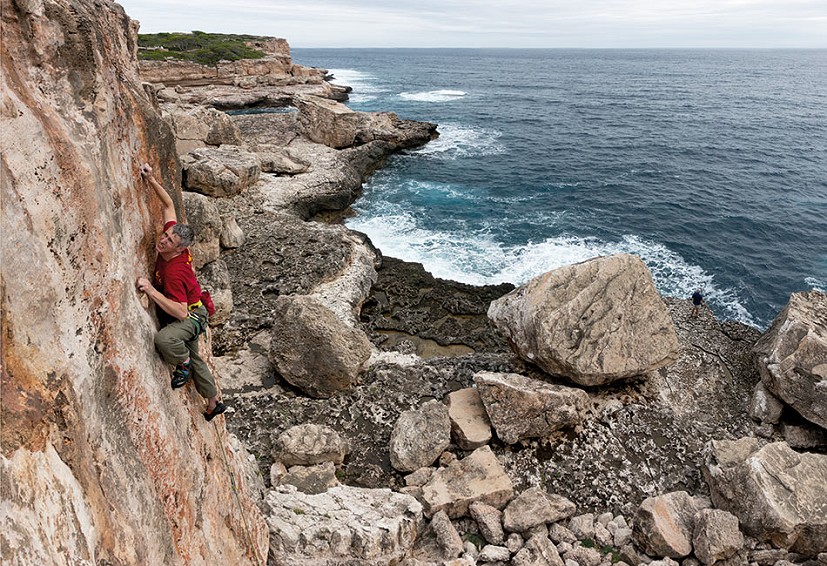
Learn to rethread and practise effective communication
Rethreading enables a climber to safely untie their knot and rethread the rope through a ring on the chains at the top of the route in order to retrieve their quickdraws on the descent. While some sport routes have fixed carabiners in place at the top for lowering, it's best practice not to clip and lower-off from these after each climb, since they wear out easily. Try to lower-off from in-situ rings/chains only when the route requires stripping (after everyone in your party has attempted the route, for example).
The process involves the climber attaching themselves to the anchor chain at the top, pulling up some slack rope and securing it, before untying their knot and rethreading the rope through the ring in the anchor and retying. The belayer then takes up any slack and the climber - once they have double-checked that the rope is running through the ring and is correctly retied to their harness - can detach themselves from the chain and be lowered as normal to collect the quickdraws.
Many serious accidents have happened due to a lack of understanding or concentration when rethreading—even by experienced climbers. It's really important to learn how to do it properly and to focus on getting right each time. If you arrive at the top of a route feeling tired, give it a few minutes before starting to rethread.
Communicate clearly that you have attached yourself at the top before the belayer pays out any slack. Ask the belayer to take the rope in tight and check that the rope tightens through the ring and up to your harness to make sure you've not forgotten to thread the ring or re-tie properly.
Read this UKC article on rethreading.
Learn to stick clip
A stick clip can pre-place quickdraws into bolts, either with or without the rope clipped into them. They are primarily used to pre-clip the first bolt or two from the floor to prevent decking-out and hitting the ground. You can also use them mid-climb to put a quickdraw into the next bolt or few, and even pre-clip them by attaching yourself directly to the last quickdraw you have clipped via your belay loop and taking the weight off the rope to enable slack to be drawn and the stick to reach the next bolt. They can be fiddly to get the hang of, but are well worth the investment to prevent nasty falls low down on a climb. Be careful when using one that you don't drop it—most come with a cord to attach to your harness.
Tie a knot in the end of your rope and consider rope lengths
Being aware of how long your rope is (or one you're borrowing) and the route lengths is crucial. Otherwise, if the length of the route doubled (to go up and get back down) is longer than the rope length, the rope could run through the belay device and the climber will drop to the floor — but not if you tie a decent overhand knot (at least) in the end of the rope and check climb lengths in the first place. If you cut an end off your rope once it gets furry or frayed, bear in mind that the length will have changed.
Practise route-reading and think about where to place the quickdraws and clip from
Look at a route beforehand and work out a good sequence, rests, gear and clipping points. You can even route-read whilst en-route. By having a rough idea of the sequence and hold types before an onsight or a much more intimate knowledge of the moves when redpointing, you can improve your chance of success by finding rest positions and comfortable places to clip from—preferably with straight arms to reduce strain on your muscles.
Consider the profile of the climb: Is it steep, vertical, slabby? Different angles will offer varying clipping and resting opportunities. A slab or off-vertical wall will offer no-hands rests, foot-plants and take most of the weight off your arms by their very inclined nature. If it's steep, can you find heel or toe hooks, knee bars and if you're really lucky—a bat hang off your toes with no hands?
Placing the quickdraw and clipping as soon as you can may feel the safest option, but it's not always the most efficient. Clearly it depends on the situation: if there is ground-fall potential or no other option, then clip ASAP—but more often than not, that climber you see pulling up yards of slack with bent arms desperately reaching up for the quickdraw doesn't really need to clip from there. If you can climb a bit higher to a better jug slightly above the clip, this will save energy. It can be quite committing to bypass a strenuous but safer-seeming clip from below the quickdraw in favour of clipping from a better hold above, but you will thank yourself for it eventually.
Wear a helmet if you wish
For reasons that aren't entirely logical, many more climbers wear helmets when trad climbing compared to when sport climbing (although numbers of helmet-donning sport climbers do seem to be increasing, anecdotally). Some wear a helmet for trad as they believe that the risk of inverting or taking a ground fall is higher when trad climbing if gear rips or there are larger run-outs, or that the risk of rockfall is greater on the kinds of crags that lend themselves to trad climbing.
The truth is that any crag has a risk of rockfall, and that it's entirely possible to hit your head on any type of climbing. Make an informed decision for yourself, and don't be tempted to follow the crowd on this point.
Learn to belay dynamically and give a soft catch
Good belaying skills can be the difference between loving sport climbing and hating it. If you're not paying slack out quick enough, the climber will have to pull hard on the rope and delay their clip, costing them precious energy. If you keep the rope too tight, the climber also risks slamming hard into the rock after falling off.
Leaving a small amount of slack in the system, anticipating the climber's movements and clipping, while keeping an armful of slack to hand out quickly when they need it before taking up any extra rope, will enable a smooth climb and safer falls.
Be mindful of weight differences. If the belayer is lighter than the climber, they will probably naturally give a soft catch as their weight pulls them slightly upwards to dampen the impact. If the belayer is a similar weight or heavier, there is a good chance that they will need to give the climber a bit more slack, since they will not necessarily be pulled upwards to soften the catch.
Read this UKC article for more detail on dynamic belaying skills.
Manage your fear of falling if it holds you back
Sport climbing outdoors can feel more intimidating than indoors, even if you're not climbing at your limit (no matter how strong or experienced you are). There are multiple factors that could weigh on your mind: the changing weather, loose rock, being unable to make out the holds or where the route goes, plus tiring walk-ins and the increased challenge of getting help if anything goes wrong.
While all climbing disciplines carry an inherent level of risk, it's worth bearing in mind that sport climbing, when practised responsibly, can be very safe and enjoyable.
Falling off onto solid rock—with its varied terrain and sharp texture—can be intimidating. This fear is only natural; it's nothing to be ashamed of. Learning how to fall in a responsive and relaxed manner, and doing practice falls, can help. Read this UKC article about how to manage the fear of falling.
Don't get complacent and listen to your mind and body. If you're tired, be extra vigilant and go easy on yourself.

Use a guidebook or app to choose appropriate crags and routes
You can research most crags around the world using the UKC Logbooks, and use a guidebook to help choose crags, sectors and routes for your level. A guide will give a brief overview of a crag and its approach, display the lines on a photo or drawing called a 'topo' with rough route lengths, plus short descriptions of each climb.
The Rockfax Digital app for iOS and Android covers most areas in the UK and Europe.
Dos and don'ts:
Don't hog lines - let others climb on your quickdraws if you are leaving them in while projecting for the day. They might even give you some alternative beta, or take the quickdraws out for you if you decide against another try!
Don't leave quickdraws in routes overnight - they'll likely get stolen and it's not good etiquette.
Never lower-off/descend or top-rope on a single quickdraw if it's not the first one (for example, if you can't complete the route and decide to strip the quickdraws below, for whatever reason). Quickdraws can very occasionally twist and the gate can be opened by the rope.
Don't top-rope using the ring at the top/in-situ carabiners. This causes unecessary wear and tear on the permanent gear. Use your own screwgates or two quickdraws with gates opposed, facing opposite directions.
Respect the rock and the crag environment - park sensibly, toilet responsibly and respectfully, take your rubbish home, don't play loud music, keep dogs under control.
Don't climb on wet rock - this can damage and polish the rock.
Do brush away any tick-marks - don't spoil the onsight for others by leaving unsightly marks.
Do consider learning to multi-pitch as your next step. The basics are the same, you just need to learn to build belays and likely pick up some abseiling skills. Get a friend or instructor to show you the ropes.
- INTERVIEW: Albert Ok - The Speed Climbing Coach with a Global Athlete Team 17 Apr
- SKILLS: Top 10 Tips for Making the Move from Indoor to Outdoor Bouldering 24 Jan
- ARTICLE: International Mountain Day 2023 - Mountains & Climate Science at COP28 11 Dec, 2023
- ARTICLE: Did Downclimbing Apes help Evolve our Ultra-Mobile Human Arms? 5 Dec, 2023
- ARTICLE: Dàna - Scotland's Wild Places: Scottish Climbing on the BBC 10 Nov, 2023
- INTERVIEW: Loki's Mischief: Leo Houlding on his Return to Mount Asgard 23 Oct, 2023
- INTERVIEW: BMC CEO Paul Davies on GB Climbing 24 Aug, 2023
- ARTICLE: Paris 2024 Olympic Games: Sport Climbing Qualification and Scoring Explainer 26 Jul, 2023
- INTERVIEW: Malcolm Bass on Life after Stroke 8 Jun, 2023
- ARTICLE: Alexandr Zakolodniy - A Climbing Hero of Ukraine 26 Apr, 2023



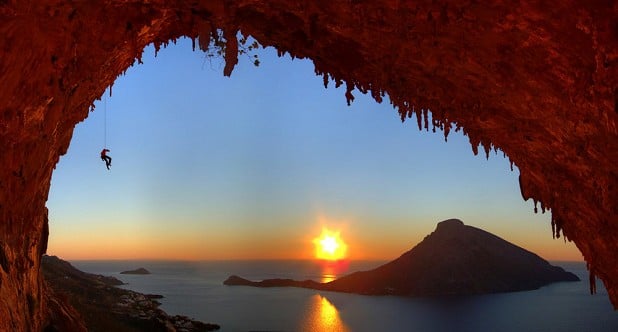
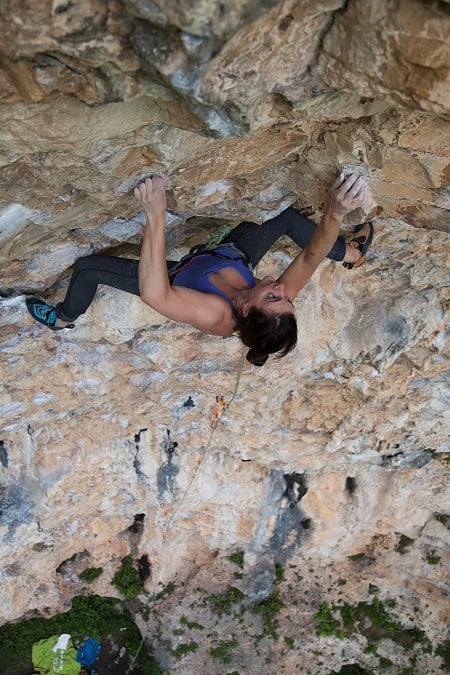
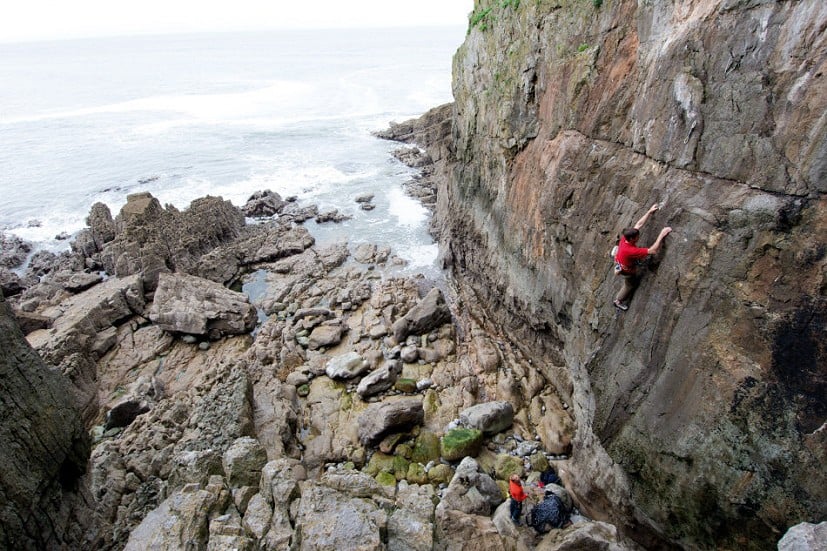
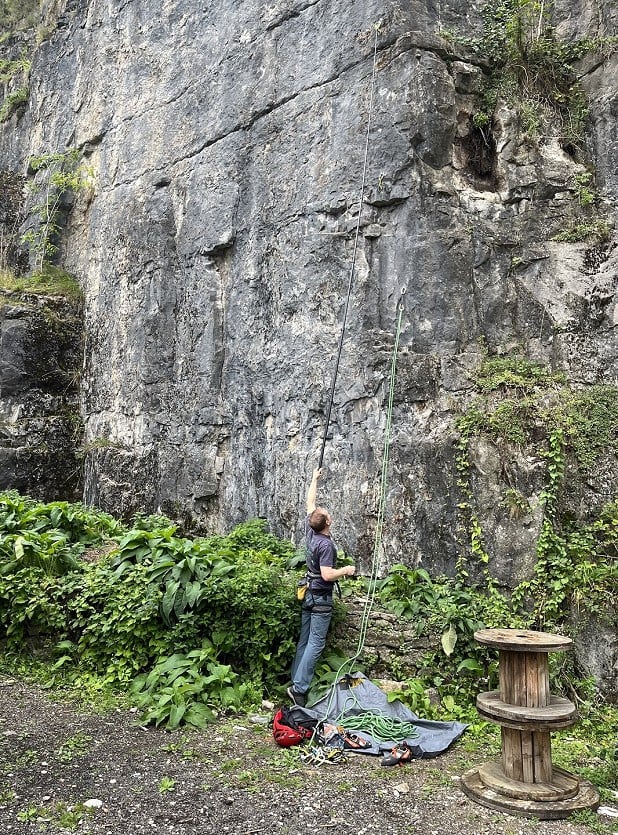

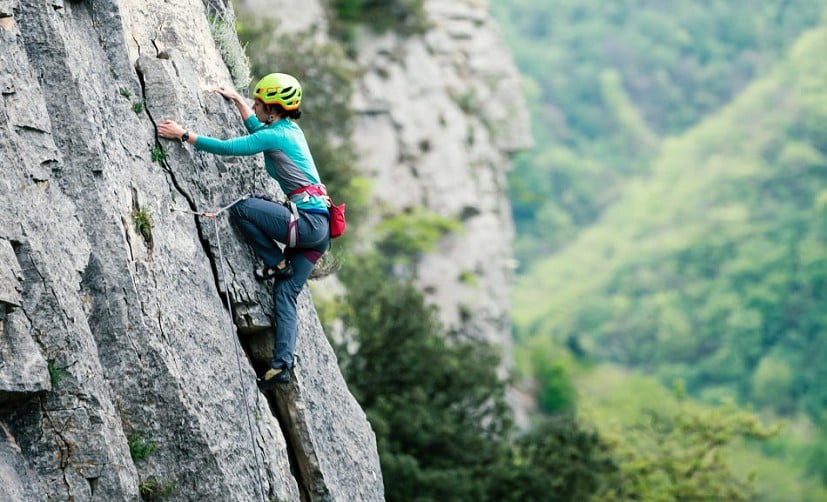
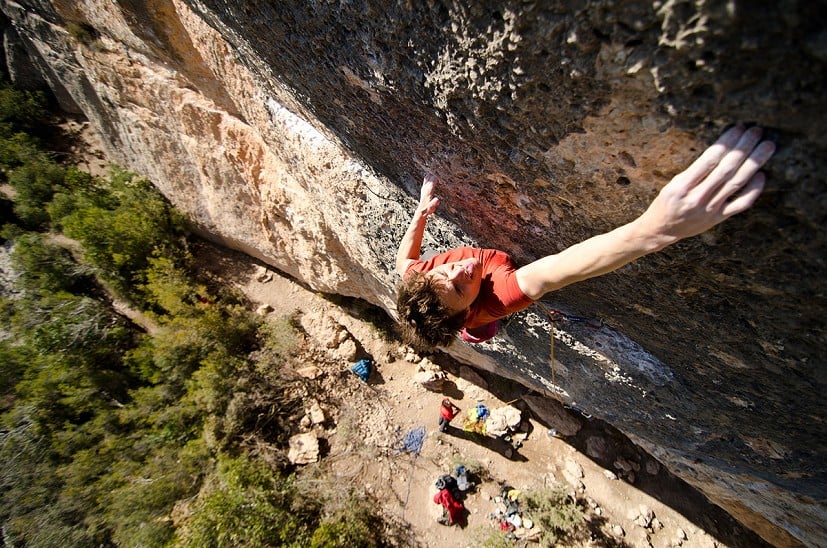

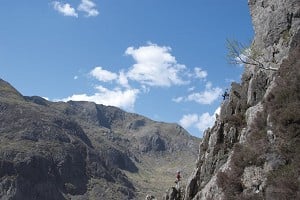

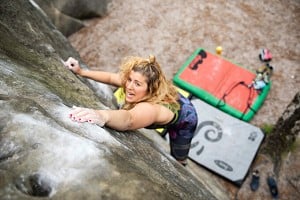









Comments
In the 9 photos included there is only 1 person with a helmet on. 'Wear a helmet if you wish' is I suppose better than not mentioning it at all. But really, UKC could push the safety element of this better.
Moan over - this is otherwise a really nice and useful article
It says a lot more than that and is actually pretty balanced with the overall recommendation to wear a helmet. I am not sure whether the photos are representative or not, but with modern light and comfortable helmets, certainly they are becoming more commonly worn for sport climbing.
From the article: “Communicate clearly that you are 'safe!' when you attach yourself at the top before the belayer pays out any slack.”
No No No!
Climbers new to sport from trad may take the call of “safe” as an invitation to detach the belay device from the rope, as they would ready for the leader to take in. This actually happened to me leaving me clipped to the lower off bolt with no belayer.
when you are clipped into the lower off you are definitely not safe if no longer belayed. The only calls really necessary for sport are “take” and “slack”
As for helmets the risk of inverting can be considerable in sport climbing, especially if a foot is placed in front of the rope (no mention in article) which is more likely on the less steep climbs recommended in the article for those new to outdoor sport. I can’t think of any less steep UK sport crags that aren’t prone to rockfall. The emphasis on importance of helmets should be stronger
As above, calling safe at the top isn't what is taught as best practice. When I'm teaching I encourage people to know what the plan for the route is at the bottom and communicate clearly but not to over communicate (ie, slack, take, lower).
+1 you're not safe when you clip in hard to the chains. It's a temporary teether whilst you faff around rethreading. I use the call 'in hard'.
I had a pretty scary near miss when my sister (an experienced trad climber, but at the time new to sport) tookj me off belay whilst re-threading.